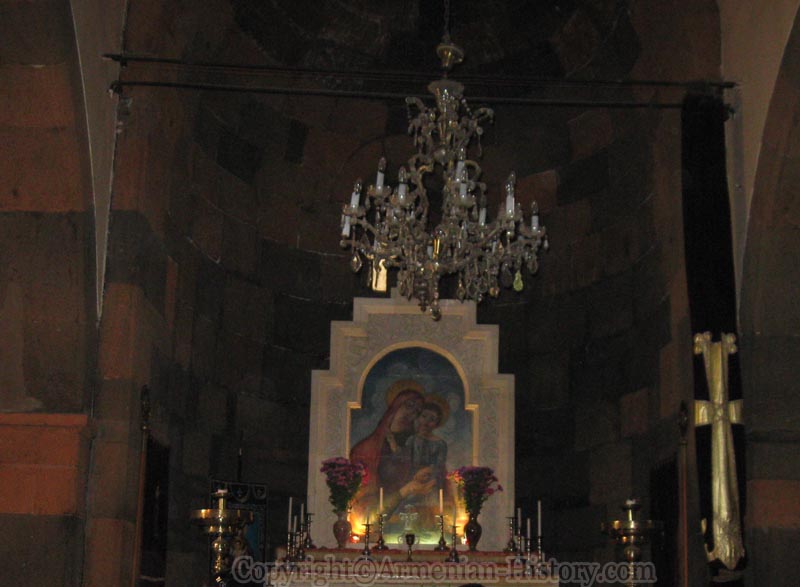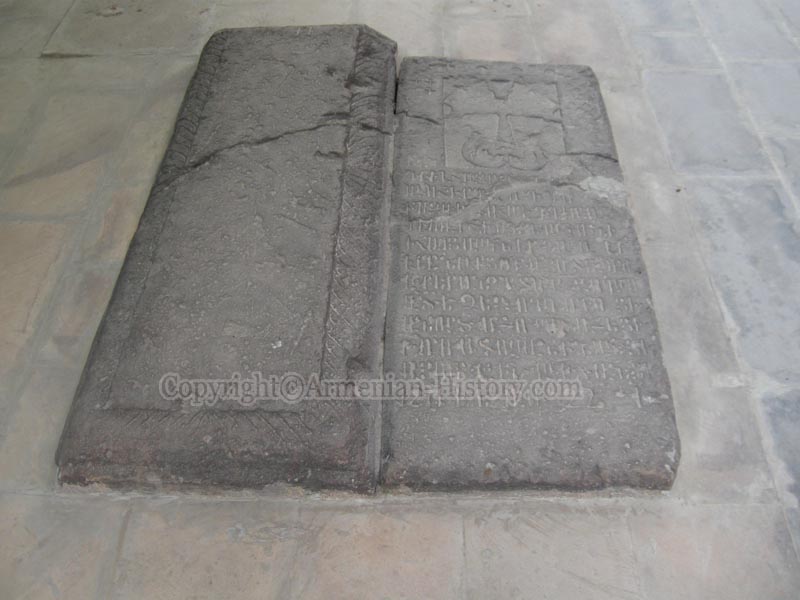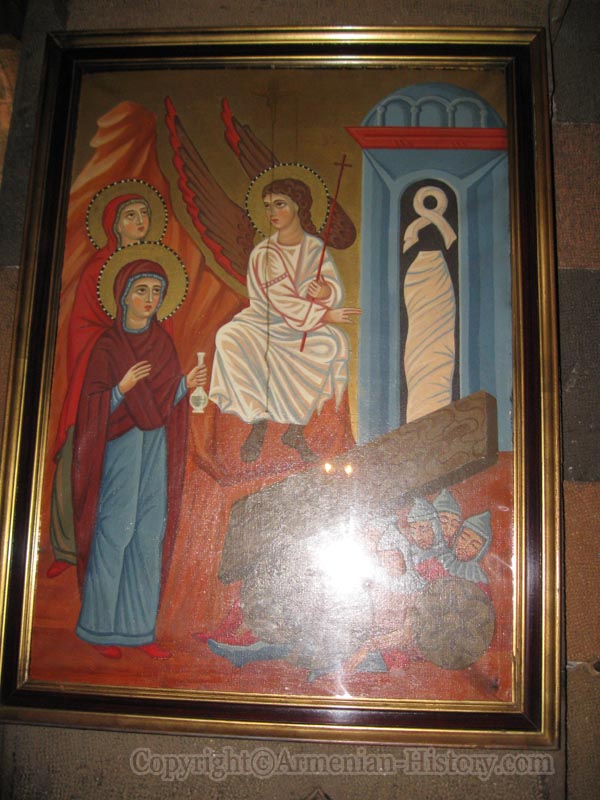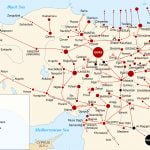The Holy Mother of God Zoravor Church, one of the oldest churches in Yerevan, stands as a testament to the city’s rich religious and cultural history. Originally named St. Astvatsatsin (Holy Mother of God), it was later renamed St. Zoravor due to its significant role in the spiritual life of the community. The church is located in the historic Shahar District of Old Yerevan, where the tomb and Chapel of St. Anania the Apostle were once prominent sanctuaries.
In the 17th century, with generous financial support from the residents of Yerevan, Abbot Movses Syunetzi established a monastery complex around the church. This complex included the chapel, living quarters for the congregation, and the diocesan chambers, all enclosed by fortified walls. Abbot Movses also founded a monastic school within the complex, making it an important center of learning and spirituality.
During the reign of Catholicos Pilipos (1632–1635), the monastery underwent reconstruction. However, the devastating earthquake of 1679 completely destroyed the newly built monastery. Thanks to the generous donation of Khoja Panos, a wealthy resident of Yerevan, the current St. Zoravor Church was rebuilt in 1693 on the same site. A later inscription, from one hundred years after the church’s construction, records that it was renovated by Gabriel Haryurabet under the reign of Catholicos Ghukas.












Architecturally, the church is a three-nave basilica with no dome. The interior and exterior design is strikingly simple, yet the church has notable features such as the tri-vaulted porch on its western side, adorned with decorative columns. Khachkars (Armenian cross-stones) from the 17th century, beautifully carved and placed on the outer walls, add to the church’s historical and spiritual significance.
In 1889, the St. Anania Chapel was rebuilt on the northeastern side of the church, with stairs leading to a graveyard on the eastern side. During the Soviet era, the church served various purposes, but it was eventually returned to the Armenian Apostolic Church and resumed its religious functions.
In the 1970s, the St. Zoravor Church underwent extensive restoration under the auspices of the Mother See of Holy Etchmiadzin. The restoration efforts, funded by Mr. Sarkis Petrossian, an Armenian benefactor from France, included repairs to the decaying walls and roofs, the addition of a choir gallery, and the restoration of the St. Anania Chapel. These efforts ensured that the church remains an active and vibrant place of worship today.
Սբ. Զորավոր Աստվածածին եկեղեցի
Սուրբ Զորավոր եկեղեցի – Երևանի հնագույն եկեղեցիներից մեկը: Սկզբնապես այն կոչվել է Սուրբ Աստվածածնի անունով, այնուհետև վերանվանվել է Սուրբ Զորավոր: Եկեղեցին գտնվում է հին Երևանի Շահար քաղաքամասում: Նախապես այդտեղ գտնվում էր Սուրբ Անանիա Առաքյալի մատուռ դամբարանը, որը նշանավոր սրբավայրի համարում ուներ: Երևանցիների նյութական օժանդակությամբ Մովսես Սյունեցի վարդապետը կառուցում է վանքային համալիր՝ բաղկացած եկեղեցուց, մատուռից, միաբանական խցերից, առաջնորդարանից` բոլորն առնելով պարիսպների մեջ: Հավաքելով այստեղ միաբանություն, հիմնում է նաև վանական դպրոց:
Վանքի վերաշինությունը կատարվել է Փիլիպոս Կաթողիկոսի օրոք (1632-1635թթ.), սակայն նորակառույց վանքին նույնպես վիճակված չէր երկար գոյատևել: 1679թ. երկրաշարժի ժամանակ այն հիմնավեր կործանվեց: Մեր ժամանակների Սբ. Զորավոր եկեղեցին կառուցվել է երկրաշարժից հետո նույն տեղում 1693թ.` Երևանի մեծահարուստ Խոջա Փանոսի նվիրատվությամբ: Մեկ այլ արձանագրությունից, գրված կառուցումից հարյուր տարի հետո (1793), տեղեկանում ենք, որ Սբ. Զորավոր եկեղեցին նորոգվել է Գաբրիել հարյուրապետի կողմից, Ղուկաս կաթողիկոսի օրոք:
Եկեղեցին պատկանում է եռանավ բազիլիկների տիպին, անգմբեթ է: Աղոթասրահի արևելայն կողմում ավագ խորանն է ավանդատներով՝ հարավային և հյուսիսային անկյուններում: Եկեղեցու ներքին և արտաքին ճարտարապետությանը բնորոշ է խիստ պարզությունը: Որոշ չափով այն աշխուժացված է շնորհիվ արևմտյան կողմի եռակամար նախասրահի՝ այն պսակող սյունազարդ կաթողիկեով հանդերձ: Արտաքին պատերի առանձին հարթություններում ագուցված են XVII դարով թվագրված գեղաքանդակ խաչքարեր:
1889 թ. եկեղեցու հյուսիս-արևմտյան անկյան մոտ կառուցվել է նաև Սբ. Անանիա մատուռի նոր շենքը` արևմտյան կողմից դեպի տապանատուն տանող սանդուղքներով:
Խորհրդային տարիներին տարբեր նպատակների ծառայեցվելուց հետո, Սբ. Զորավոր եկեղեցին վերադարձվեց հավատացյալներին, դարձավ գործող: Եկեղեցին՝ Մայր Աթոռի հովանու ներքո, 1970-ական թվականներին հիմնովին նորոգվեց: Նորոգվեցին պատերի խարխլված հատվածները, կտուրի ծածկասալերը, երգչախմբի համար ավելացվեց վերնատուն, կառուցվեց երիցատան նոր շենք: Նորոգման ենթարկվեց նաև Սբ. Անանիայի մատուռը: Եկեղեցու հիմնական վերանորոգումն ու շրջապատի բարեկարգումը կատարվեց Մայր Աթոռի բարերար, ֆրանսահայ Սարգիս Պետրոսյանի նվիրատվությամբ:



